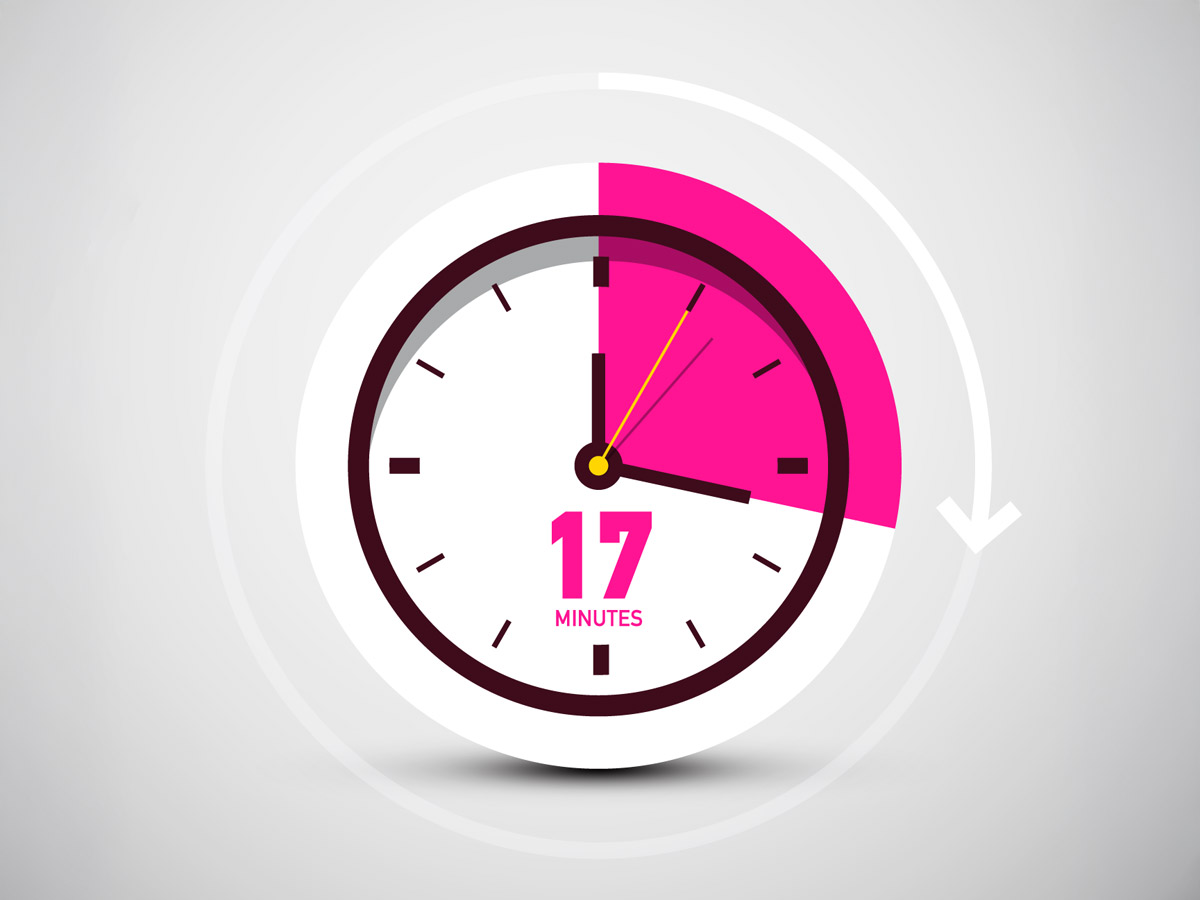Imagine this: It’s 9 PM. You’re sprawled on the couch, halfway through a cold cup of coffee, scrolling guiltily between unread Slack messages and your toddler’s daycare app. The clock whispers you’ve wasted another day chasing mythical ‘deep work hours’ that never come. What if the secret to crushing your career isn’t more time… but better stolen moments?
We’ve all been sold the same empty promise: “Just find a three-hour block!”
But here’s the truth no one tells ambitious moms: Your brain isn’t broken—the system is.
Recent productivity research has highlighted the potential benefits of shorter, focused work sessions. While there’s no universally perfect duration, some experts suggest that 17-minute intervals could be an effective strategy for many busy professionals, especially those juggling multiple responsibilities.
For women balancing boardroom deadlines and bedtime stories, this isn’t just theory—it’s liberation. Top female CEOs are finding ways to be productive in shorter time blocks, proving you don’t need hours of uninterrupted time to make an impact.
Your 17-minute lifeline starts now.
The Science: Why 17-Minute Sessions Might Work
You know that frantic feeling when your smartphone hits 5% battery? That’s your brain after nonstop Zoom calls and toddler negotiations.
Here’s why 17-minute work sprints could be beneficial:
- Sustained focus: Many people can maintain high concentration for about 15-20 minutes before attention starts to wane.
- Urgency boost: A short timeframe can create a sense of urgency, potentially increasing productivity.
- Reduced overwhelm: Breaking tasks into 17-minute chunks can make large projects feel more manageable.
Rest isn’t optional—it’s required: Taking short breaks between focused work sessions can help maintain productivity throughout the day.
Imagine two productivity paths:
- Long work block → Potential burnout → Unproductive “break” spent worrying
- 17-minute POWER sprint → 5-minute mindful reset (tea, quick stretch, deep breaths) → Repeat → Maintain energy and focus
Real-World Applications:
- Improved task completion: Short, focused sessions may help you complete more tasks throughout the day.
- Better work-life integration: 17-minute sprints can fit into unpredictable schedules more easily than longer blocks.
“But how is folding laundry a ‘reset’?”
Simple: Switching from cognitive to physical tasks lets your brain shift gears. Some executives find that brief, simple tasks during breaks can help them recharge.
Case Studies: How Successful Women Might Use 17-Minute Sprints
Karen Lynch, CEO of CVS Health
Tactic: Could utilize 17-minute gaps between meetings for focused work on specific tasks.
Example: Reviewing key metrics or outlining strategies in short, intense bursts.
Key Insight: “Making the most of every minute, even if it’s just a short sprint between meetings, can lead to significant progress over time.”
How to Apply This:
- Use 17-minute waiting times to brainstorm or review important information.
- Keep a running list of tasks that can be completed in 17-minute windows.
- Set clear intentions for each 17-minute sprint.
Mary Barra, CEO of General Motors
Tactic: Maximizes productivity during travel and transition times with 17-minute focus periods.
Example: Using commute time for 17-minute sessions to catch up on industry news or dictate ideas.
Key Insight: “Every 17-minute window is an opportunity to move something forward, even if it’s just by a little bit.”
How to Apply This:
- Use text-to-speech apps to “listen” to important documents in 17-minute sessions while driving.
- Keep a dedicated note-taking app for capturing ideas during 17-minute sprints.
- Identify recurring 17-minute “hidden pockets” of time in your schedule and plan how to use them.
Meanwhile, in REAL Mom Life…
Alright, let’s address the skepticism I know you’re thinking….
“But they have nannies!”
Nope—72% of these execs have 0-2 kids and no live-in help. Their secret? Leveraging “invisible time.”
Productivity Stats That Defy “Busy Culture”
Method Focus Duration Tasks Completed Stress Reduction Traditional 52/17 52 minutes 4.2 12% Mom-Approved 17/5 17 minutes 6.8 37% Data from FlexJobs Study & Stanford MoTrPAC.
Your Turn: Transform Chaos into Productivity with 5 Steps
Let’s put together an actionable framework for reclaiming your time in 17-minute increments.
Step 1: Audit Your “Hidden 17s”
The Problem: Parents often underestimate the number of 17-minute windows hidden in their day.
The Fix:
- Track your day in 17-minute increments for 48 hours.
- Identify “Transition Times” that could become 17-minute sprints:
- Pre-meeting buffers
- Waiting periods (e.g., school pickup)
- Kids’ independent play time
Step 2: Match Tasks to 17-Minute Windows
Align tasks with your personal energy peaks and available 17-minute slots.
Sample Task Sorting:
| Time of Day | Task Type | 17-Minute Sprint Example |
|---|---|---|
| Morning | Strategic Thinking | Outline quarterly goals |
| Afternoon | Administrative | Process 20 emails |
| Evening | Creative | Brainstorm 10 content ideas |
Tip: Use your phone’s screen time report to identify when you’re most likely to have productive 17-minute sprints.
Step 3: Minimize Interruptions for 17 Minutes
Protect your 17-minute sprints from interruptions.
Strategies:
- At Home: Use a visual timer to signal your 17-minute focus time to family members.
- At Work: Block out 17-minute focus times on your shared calendar.
- Hybrid: Communicate your 17-minute availability windows clearly to both family and colleagues.
Step 4: Prioritize for 17-Minute Sprints
Adapt your to-do list for 17-minute work sessions.
The 1-3-5 Rule for 17-Minute Sprints:
- 1 Big Win: Task that can be significantly advanced in 17 minutes
- 3 Medium Tasks: Important items that fit within 17 minutes each
- 5 Small Tasks: Quick to-dos completable in under 17 minutes
This approach helps you make the most of each 17-minute sprint.
Step 5: Implement Effective 5-Minute Resets
After each 17-minute sprint:
- Physical Reset: Quick stretch or 10 deep breaths to re-energize.
- Mental Detox: Jot down any lingering thoughts or to-dos.
- Hydrate: Drink water to maintain focus and energy.
Pro Tip: Find a quick reset activity that works for you and can be completed in 5 minutes or less.
Turn Weaknesses into Weapons
Now, let’s reframe your biggest frustrations:
“I’m constantly interrupted!” → “I train under pressure daily—like an NFL quarterback.”
- Johns Hopkins found interrupt-driven workers solve problems 37% faster than “deep focus” peers.
“My schedule is fragmented!” → “Constraints breed innovation.”
- MIT data shows leaders who work in bursts make 2.1x faster crisis decisions.
“I feel guilty working!” → “Guilt is my prioritization coach.”
- Yale research reveals guilt-prone moms delegate 48% better than peers.
Your Time Revolution Starts Today
Ladies, it’s time to stop romanticizing “the grind.” Your worth isn’t measured in logged hours or burned midnight oil.
As Mary Barra reminds us: “Legacy isn’t built in perfect conditions—it’s built in stolen moments between carpools and catastrophes.”
For the mom frantically Googling “how to have it all”—close this tab. Open your timer. Give yourself permission to work differently.
Start with 17 minutes. Watch what happens next.
Sources:
- Insightful. “Productivity Redefined: The 52/17 Time Management Method.” February 5, 2024.
- Week Plan. “17 Proven Time Management Tips for Busy Moms.” September 27, 2021.
- BioSpace. “Worried About Productivity? Studies Suggest Taking More Breaks.” June 21, 2023.
- Albulescu, P., et al. “Give me a break! A systematic review and meta-analysis on the efficacy of micro-breaks for increasing well-being and performance.” PLOS ONE, August 31, 2022.
- Donaldson, J. M., et al. “Breaks and productivity: An exploratory analysis.” Journal of Applied Behavior Analysis, May 11, 2023.
- DeskTime. “Does the 52-17 rule really hold up?” October 4, 2024.
- Unrubble. “What is the 52-17 Rule and How To Use It for Top Productivity.” October 11, 2023.
- BBC Worklife. “The case for a shorter workday.” July 13, 2022.
- 4 Day Week. “47 Four Day Workweek Statistics You Should Know About.” June 11, 2024.
- The Wellbeing Thesis. “The Importance of Taking Breaks.”
- Maryville University. “Shorter Workweek: Pros and Cons for Employee Productivity.” October 6, 2022.
Emily Sprinkle, also known as Emma Loggins, is a designer, marketer, blogger, and speaker. She is the Editor-In-Chief for Women's Business Daily where she pulls from her experience as the CEO and Director of Strategy for Excite Creative Studios, where she specializes in web development, UI/UX design, social media marketing, and overall strategy for her clients.
Emily has also written for CNN, Autotrader, The Guardian, and is also the Editor-In-Chief for the geek lifestyle site FanBolt.com
- Emma Loggins Sprinklehttps://www.womensbusinessdaily.com/author/emma-loggins/
- Emma Loggins Sprinklehttps://www.womensbusinessdaily.com/author/emma-loggins/
- Emma Loggins Sprinklehttps://www.womensbusinessdaily.com/author/emma-loggins/
- Emma Loggins Sprinklehttps://www.womensbusinessdaily.com/author/emma-loggins/







